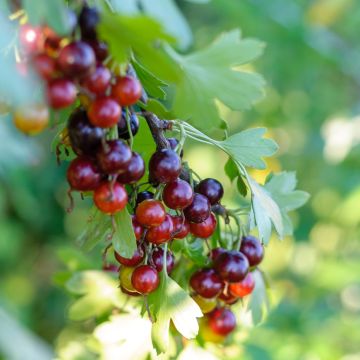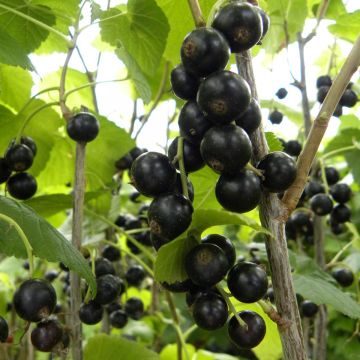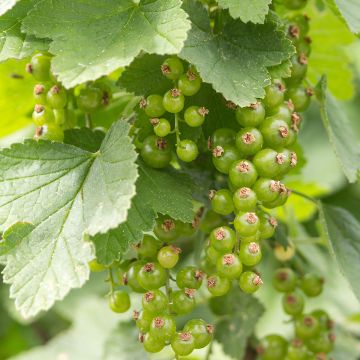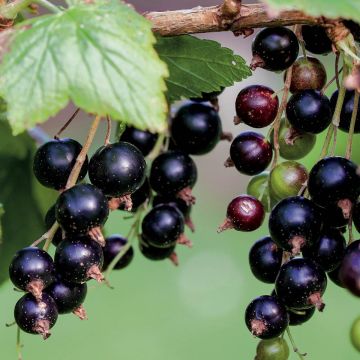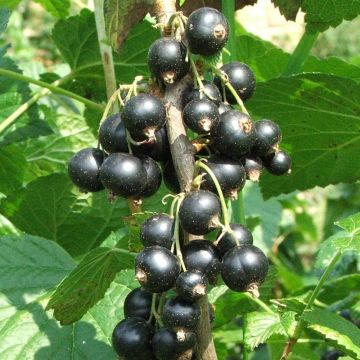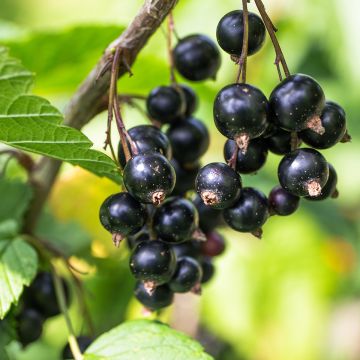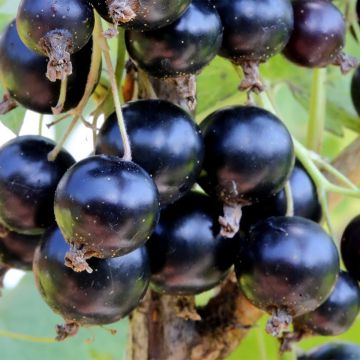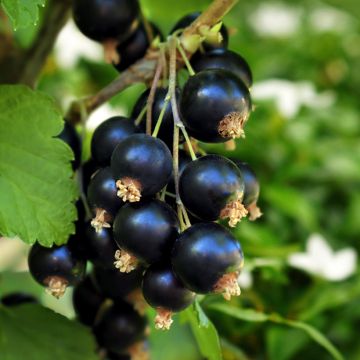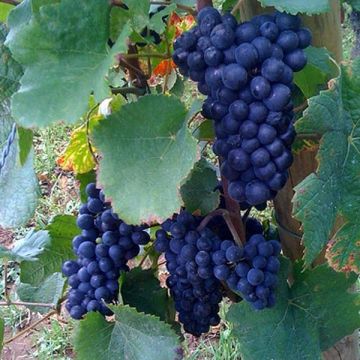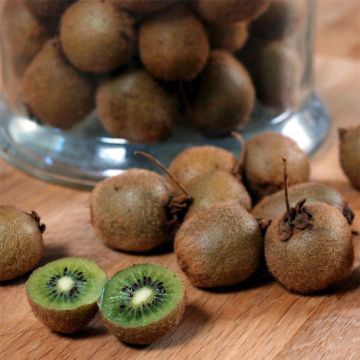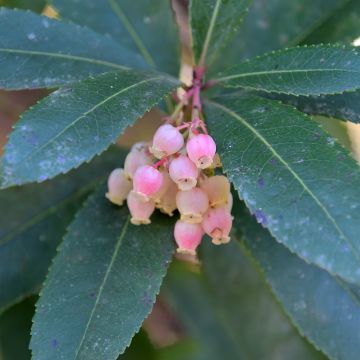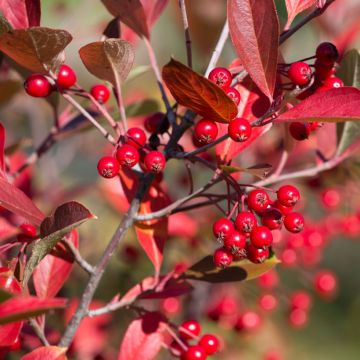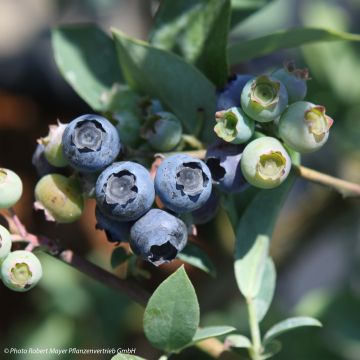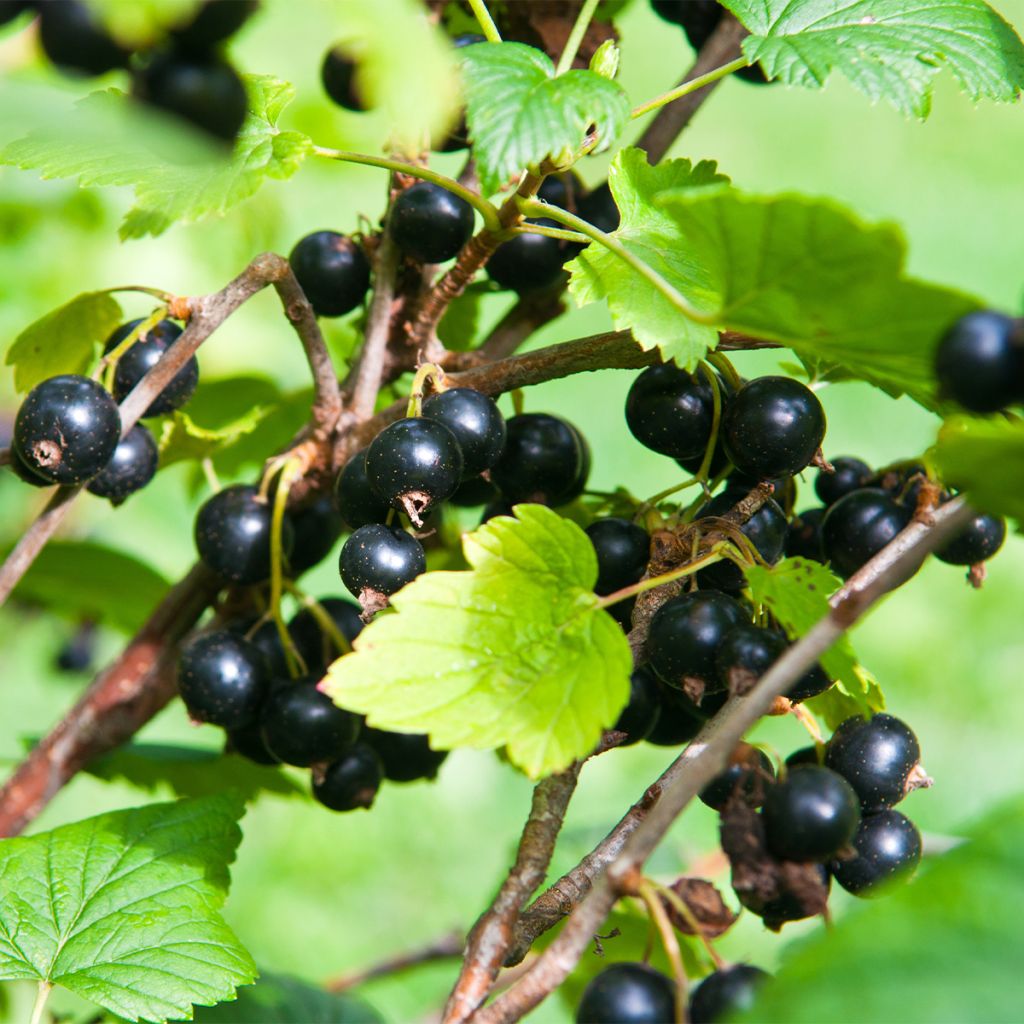

Blackcurrant Troll - Ribes nigrum
Blackcurrant Troll - Ribes nigrum
Ribes nigrum Troll
Blackcurrant
Special offer!
Receive a €20 voucher for any order over €90 (excluding delivery costs, credit notes, and plastic-free options)!
1- Add your favorite plants to your cart.
2- Once you have reached €90, confirm your order (you can even choose the delivery date!).
3- As soon as your order is shipped, you will receive an email containing your voucher code, valid for 3 months (90 days).
Your voucher is unique and can only be used once, for any order with a minimum value of €20, excluding delivery costs.
Can be combined with other current offers, non-divisible and non-refundable.
Home or relay delivery (depending on size and destination)
Schedule delivery date,
and select date in basket
This plant carries a 6 months recovery warranty
More information
We guarantee the quality of our plants for a full growing cycle, and will replace at our expense any plant that fails to recover under normal climatic and planting conditions.
Description
The Troll Blackcurrant is an early and self-fertile variety that produces clusters composed of large black berries filled with a slightly coloured juice, with a delicious, sweet and tangy flesh. Due to its early flowering, it is rather recommended for regions with milder climates. Extremely productive, this variety with flexible branches that bend under the weight of its large fruits requires special attention when picking to preserve fruit quality. Plant from October to March for a harvest around August.
Created by INRA, the Ribes nigrum Troll is the result of cross-breeding between two varieties: Tsema and Blackdown. The Blackcurrant Bush belongs to the Grossulariaceae family, like Redcurrants and Gooseberries, from which it distinguishes itself by its black fruits. Its origins in temperate regions from Northern Europe to Asia give this bush excellent hardiness. Cultivated since the 16th century, the Blackcurrant Bush grows spontaneously in the cool woods of northeastern Europe. Historically, it has been mainly used as a medicinal plant, with apothecaries and healers attributing powerful properties to it. It is a bushy, non-thorny shrub with a tufted habit of slightly stiff, sparsely branched stems, whose wood is soft and has abundant pith. This very hardy bush will reach 1.30m (4ft) in all directions. The foliage is deciduous, composed of palmate, lobed, medium green leaves which are particularly aromatic and pleasantly fragrant when crushed. Leaves, fruits, and buds are intensely scented due to the presence of glands containing essential oils, used in perfumery.
The flowering takes place in spring, in the form of clusters of small greenish to brownish insignificant flowers, intensively visited by bees. Fruiting mainly occurs on two- and three-year-old branches and becomes rarer on branches four years and older. The bush is then covered with numerous clusters of round, black berries filled with juicy flesh containing small seeds. This self-fertile and vigorous variety produces abundantly in August. The harvest, staggered as the fruits ripen, is simplified due to the size of the berries. Indeed, it produces clusters of large black fruits, with fragrant and juicy flesh and a sweet flavour with a slight acidity. The yield of a Blackcurrant Bush is about 3 to 5kg of fruit per plant, depending on the age and growing conditions of the plant. All varieties of Blackcurrant Bushes are rich in vitamin C, antioxidants, minerals, trace elements, as well as potassium, calcium, and phosphorus, making them real health assets. Additionally, they are among the least energy-dense small fruits (50 kcal per 100g).
The Ribes nigrum Troll can be susceptible to Phytophthora, a disease caused by small-sized mites that can be observed under a magnifying glass, which settle inside the bud and cause it to swell. The damaged bud can then become a vector of viral disease. To fight against this infection, it is possible to treat the plants with Bordeaux mixture combined with sulphur, after cutting and removing the affected branches.
The berries of the Troll Blackcurrant with their highly fragrant and sweet flesh, and a mild flavour with a slight acidity, are exquisite to enjoy fresh to benefit from all the nutritional advantages of the fruit. Excellent in jellies or jams, they can also be used to garnish pies and make cakes. They are perfect for making sorbets, ice creams, or milkshakes. The flavour of the fruits adds a real boost to seasonal fruit salads, red meats, or as a small touch in salads. They can also be used to make juices or syrups, not to mention the traditional blackcurrant liqueur, which can flavour Kir, cocktails, and Sangria.
In summer, the Blackcurrant Bush is very decorative due to the colour of its long clusters of black berries that are enjoyable to pick. In the garden, it finds its place in association with Redcurrants, Raspberry bushes, or other varieties of small fruits to form a low edible hedge. It can be grown in a pot, but be careful to choose a container that is at least 40cm (16in) tall and to be vigilant about regular watering with non-calcareous water.
Report an error about the product description
Blackcurrant Troll - Ribes nigrum in pictures
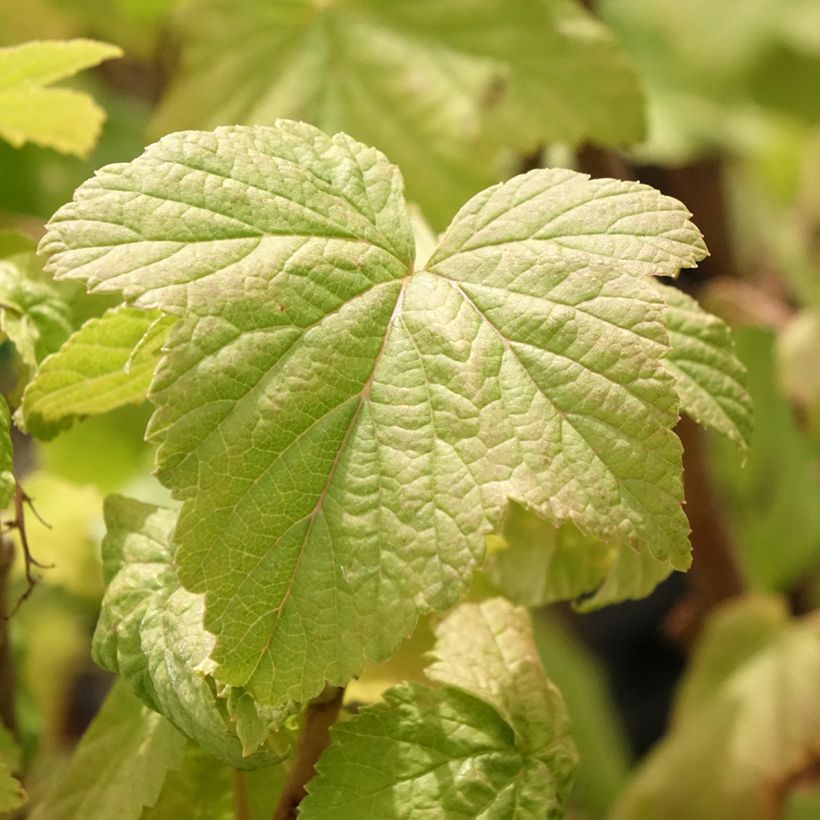



Plant habit
Fruit
Flowering
Foliage
Botanical data
Ribes
nigrum
Troll
Grossulariaceae
Blackcurrant
Cultivar or hybrid
Other Blackcurrant bush
View all →Planting and care
Plant the Blackcurrant Bush from October to March, avoiding periods that are too cold or too wet. It thrives in ordinary soils, even poor ones, without too much limestone. The Blackcurrant Bush prefers well-drained, fresh soil, but not constantly wet. Since it dislikes heat and drought, plant it in the sun in the cooler northern regions or in partial shade in warmer southern ones. Choose a location sheltered from strong winds.
When planting, space the plants 1.20m (4ft) apart in all directions. For bare-root plants, soak the roots in a pralinage solution to prevent air pockets from forming between the roots and the soil. You can either prepare the pralinage by mixing 1/3 very fine soil or compost, 1/3 cow dung or compost, and 1/3 rainwater, or buy it commercially. Dig a hole, incorporate decomposed manure or mature compost into the soil, insert the plant, and cover with soil. Water thoroughly. Then mulch the soil to retain moisture in the summer.
An application of organic fertiliser at the start of vegetation will support fruit production and plant health. It is a tolerant shrub, not very susceptible to diseases. It does have a few enemies, such as aphids, which can be eliminated by spraying with soapy water or a garlic decoction. In case of powdery mildew, spray with Bordeaux mixture. In June-July, protect the harvest with nets to deter birds from feasting. To get rid of raspberry worms, which can sometimes be found on Blackcurrant Bushes as well, you can sow forget-me-nots along the planting; they have a reputation for driving them away.
In a Blackcurrant Bush plantation, as in any plantation, it is important to alternate varieties and species, when space allows: pollination will be facilitated, and the spread of epidemics or diseases will be limited.
Planting period
Intended location
Care
This item has not been reviewed yet - be the first to leave a review about it.
Similar products
Haven't found what you were looking for?
Hardiness is the lowest winter temperature a plant can endure without suffering serious damage or even dying. However, hardiness is affected by location (a sheltered area, such as a patio), protection (winter cover) and soil type (hardiness is improved by well-drained soil).

Photo Sharing Terms & Conditions
In order to encourage gardeners to interact and share their experiences, Promesse de fleurs offers various media enabling content to be uploaded onto its Site - in particular via the ‘Photo sharing’ module.
The User agrees to refrain from:
- Posting any content that is illegal, prejudicial, insulting, racist, inciteful to hatred, revisionist, contrary to public decency, that infringes on privacy or on the privacy rights of third parties, in particular the publicity rights of persons and goods, intellectual property rights, or the right to privacy.
- Submitting content on behalf of a third party;
- Impersonate the identity of a third party and/or publish any personal information about a third party;
In general, the User undertakes to refrain from any unethical behaviour.
All Content (in particular text, comments, files, images, photos, videos, creative works, etc.), which may be subject to property or intellectual property rights, image or other private rights, shall remain the property of the User, subject to the limited rights granted by the terms of the licence granted by Promesse de fleurs as stated below. Users are at liberty to publish or not to publish such Content on the Site, notably via the ‘Photo Sharing’ facility, and accept that this Content shall be made public and freely accessible, notably on the Internet.
Users further acknowledge, undertake to have ,and guarantee that they hold all necessary rights and permissions to publish such material on the Site, in particular with regard to the legislation in force pertaining to any privacy, property, intellectual property, image, or contractual rights, or rights of any other nature. By publishing such Content on the Site, Users acknowledge accepting full liability as publishers of the Content within the meaning of the law, and grant Promesse de fleurs, free of charge, an inclusive, worldwide licence for the said Content for the entire duration of its publication, including all reproduction, representation, up/downloading, displaying, performing, transmission, and storage rights.
Users also grant permission for their name to be linked to the Content and accept that this link may not always be made available.
By engaging in posting material, Users consent to their Content becoming automatically accessible on the Internet, in particular on other sites and/or blogs and/or web pages of the Promesse de fleurs site, including in particular social pages and the Promesse de fleurs catalogue.
Users may secure the removal of entrusted content free of charge by issuing a simple request via our contact form.
The flowering period indicated on our website applies to countries and regions located in USDA zone 8 (France, the United Kingdom, Ireland, the Netherlands, etc.)
It will vary according to where you live:
- In zones 9 to 10 (Italy, Spain, Greece, etc.), flowering will occur about 2 to 4 weeks earlier.
- In zones 6 to 7 (Germany, Poland, Slovenia, and lower mountainous regions), flowering will be delayed by 2 to 3 weeks.
- In zone 5 (Central Europe, Scandinavia), blooming will be delayed by 3 to 5 weeks.
In temperate climates, pruning of spring-flowering shrubs (forsythia, spireas, etc.) should be done just after flowering.
Pruning of summer-flowering shrubs (Indian Lilac, Perovskia, etc.) can be done in winter or spring.
In cold regions as well as with frost-sensitive plants, avoid pruning too early when severe frosts may still occur.
The planting period indicated on our website applies to countries and regions located in USDA zone 8 (France, United Kingdom, Ireland, Netherlands).
It will vary according to where you live:
- In Mediterranean zones (Marseille, Madrid, Milan, etc.), autumn and winter are the best planting periods.
- In continental zones (Strasbourg, Munich, Vienna, etc.), delay planting by 2 to 3 weeks in spring and bring it forward by 2 to 4 weeks in autumn.
- In mountainous regions (the Alps, Pyrenees, Carpathians, etc.), it is best to plant in late spring (May-June) or late summer (August-September).
The harvesting period indicated on our website applies to countries and regions in USDA zone 8 (France, England, Ireland, the Netherlands).
In colder areas (Scandinavia, Poland, Austria...) fruit and vegetable harvests are likely to be delayed by 3-4 weeks.
In warmer areas (Italy, Spain, Greece, etc.), harvesting will probably take place earlier, depending on weather conditions.
The sowing periods indicated on our website apply to countries and regions within USDA Zone 8 (France, UK, Ireland, Netherlands).
In colder areas (Scandinavia, Poland, Austria...), delay any outdoor sowing by 3-4 weeks, or sow under glass.
In warmer climes (Italy, Spain, Greece, etc.), bring outdoor sowing forward by a few weeks.






























